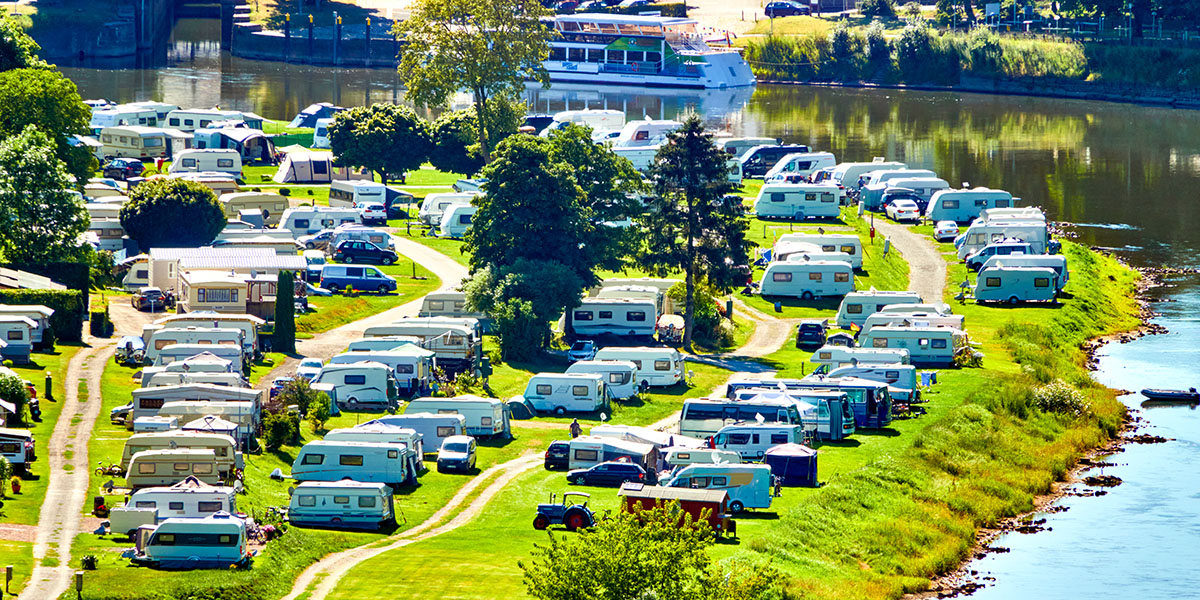What are the travel trends for RVers in 2025? Progressive and Harvest Hosts joined forces to collaborate and to research these trends. Recently, they published a 2025 RV Travel Trends report detailing their findings, which shares insights into preferences among the respondents in addition to their priorities.
Based on over 2,000 responses collected in 2024, the survey found that 92 percent of respondents planned to travel the same amount or more in 2025 compared to 2024. However, despite campground availability being identified as a top source of anxiety, 45 percent said they planned their trips less than two months ahead of time.
If there’s one key lesson to take away from the survey, it might be to plan your itinerary well in advance.
Alaska: Top Bucket-List Destination Across All Age Groups
When it comes to bucket-list destinations, Alaska ranked at the very top for all age groups, with 22 percent of all respondents naming it as their number-one pick. Canada, New England, Florida, and Yellowstone National Park rounded out the top five in this category. But for their 2025 itinerary, however, the Northeast stood out, with 24 percent listing it as their top destination.
Broken down by individual states, the most popular destinations were, in order: Alaska, Florida, Maine, Utah, and Arizona. Looking to avoid long lines at national parks this year? You’ll want to steer clear of Yellowstone, Grand Canyon, Glacier, Yosemite, and Banff (in Alberta, Canada), which were the top picks.
How Travelers Decide on a Destination
What’s the first place you look when considering a vacation spot? According to the survey, the answer varies greatly by age, with 30 percent of those over 65 indicating that they use travel guides, compared to 13 percent of those 35–54 saying that they prefer to look up videos instead (29 percent). Amongst those 55–64, there was little preference, with all sources being equally considered, including internet searches, social media, RV memberships, and camping apps.
Money Matters — But Less Than You Might Think
Though finances rank in the top three considerations for RV travel across all age groups. (Except for those over 65, where it was edged out by inclement weather.) Only 10 percent of respondents said that it negatively impacted their travel plans in 2024. In fact, 16 percent actually traveled more.
Seventy-one percent of RVers in the survey spend less than $10,000 per year on RV ownership costs. That figure includes camping fees, fuel, insurance, and more. Here there was great variation between age groups: 45 percent of those 35–54 reported spending over $10,000 over the course of the year, dipping to 22 percent of those over 65. The main determining factor, however, is whether respondents RV part-time (15 percent) or full-time (71 percent).
Common RVer Complaints: Crowds, Climate, and Campgrounds
What do RVers consider when booking a trip? Campground availability (mentioned by 45 percent of respondents). Local weather (44 percent). And their own health (39 percent). These three factors were top of mind for respondents. And once they get there, their biggest sources of anxiety are crowded campgrounds (59 percent), the outright lack of campsite availability (53 percent), and RV repairs and breakdowns (51 percent).
Fifty-nine percent of respondents said RV travel apps provide considerable relief to these concerns, allowing them to quickly book alternative accommodations and plot RV-friendly routes that include plenty of opportunity to stop, fuel, and regroup.
Who Were the Respondents?
The survey was conducted in late 2024, polling email subscribers of Harvest Hosts and Escapees RV Club. Seventy-two percent of respondents were current or former Harvest Hosts members. Of the people who responded to the survey, 67 percent were 65 or older — and 77 percent were retired. Interestingly, Go RVing’s 2025 survey of 5,500 consumers found that the median age of RV owners had fallen to 49, with those 35–54 accounting for 46 percent of all owners.
Potentially owing to the age of those who completed the survey, only five percent travel with children whereas 52 percent travel with pets. The number of respondents also skewed higher than market averages on ownership of Class A motorhomes. Motorized RVs sell about four percent of the market, but 26 percent of those who responded to the survey have a Class A motorhome. That made it the most represented category in the survey.
Taken all together, then, some universal and enduring truths emerge. For one, campgrounds are busier than ever. And while modern camping apps can help you find nearby spots, the best strategy is to book well in advance. (Also, stay on top of your RV maintenance.)

Leave a Reply